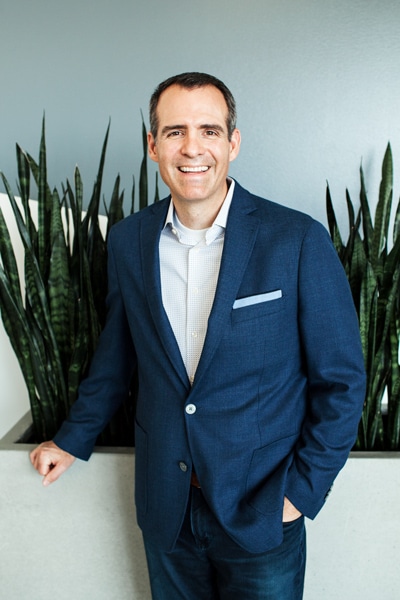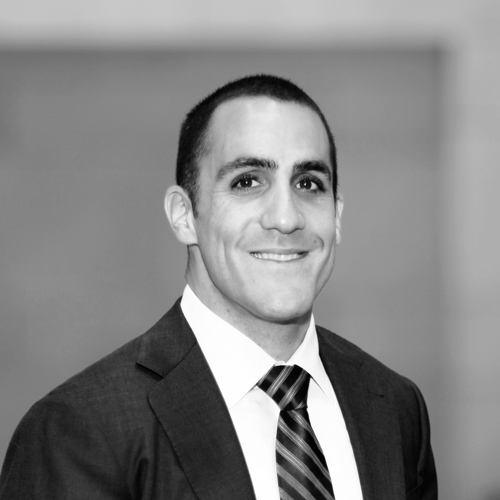Justin Judd had only been with online business-optimization software company Omniture for a little more than a year when creative-tech firm Adobe acquired it in 2009. The latter company, expanding rapidly, was looking to add an enterprise-focused business, and Omniture was the answer. For Judd, though, the transition was largely one of scale.
When the Omniture legal team joined Adobe’s, they together formed a department of about 100. In the years since, as Adobe has continued to grow with its transformation into a cloud-based business—from $2.95 billion in revenue in 2009 to $5.85 billion in 2016—the legal department has expanded to more than 200. It’s ten times the size of the team Judd worked with at Omniture, and now, as the vice president of the corporate legal group and associate general counsel, he’s one of its key leaders. Today, he’s relying on his background in the development of tech companies and collaborating closely with other department leaders to organize Adobe’s legal team into specialized groups so that it can continue to operate effectively and efficiently despite its size.

Judd’s foray into business development began early in his career, when he considered career paths in both finance and law. “I had exposure to accountants as well as lawyers, and I pondered both as careers” he says. “But eventually, I realized I could be a business lawyer and put the two together.”
He’s been working with start-up tech companies since the apex of the first tech bubble, when he worked at PricewaterhouseCoopers and became interested in technology, which led him to enroll in Stanford Law School in Silicon Valley. Afterward, he continued working with tech start-ups at the law firm Wilson Sonsini Goodrich & Rosati. While there, he worked on Omniture’s 2006 IPO, and he eventually joined the company as an in-house attorney.
When he joined the legal leadership team at Adobe, he quickly began to develop a clear philosophy of how to organize a legal department to work best for a company of increasing scale. He and the leadership team thought about how a legal department should respond to growth, they looked at Adobe’s geographical and product expansion and its need for specialized groups focused on different areas of concern and began to arrange its legal department in a way that would best support Adobe’s growth. It was a different structural approach than he’d been used to at Omniture.
“At Omniture, it was a more traditional start-up model,” he says. “We had commercial and corporate teams that flowed up to the general counsel. You could expand geographically when you needed, but in a focused way. It was a small team, and all the lawyers could communicate with each other. Everybody knew what was happening with everybody else. We had to be generalists who could handle a variety of matters, depending on the needs of the business.”
With larger companies comes a need for more specialization, Judd says, and he’s tried to build a scalable structure around sets of specialists. Corporate work at Adobe, for example, was initially scattered among different people in the legal department, and each supported a variety of topics such as real estate or securities or employment matters, often in addition to commercial responsibilities. There was less consolidation into groups. Judd therefore specifically built a corporate legal team, now made up of a dozen professionals covering all the different aspects of Adobe’s corporate work.
“It’s allowed people to become much more specialized,” he says. “For example, we have specialized employment lawyers handling employment matters—same with M&A, real estate, corporate governance, and corporate finance. And they work directly with the business leaders in their areas. However, while they all have specific areas of deep expertise, we also work together as a group and look for synergy across areas of overlapping responsibility.”
Adobe now also has a unified legal group for each of its core business areas—digital marketing and digital media—as well as a compliance team and an intellectual property and litigation team. Other teams focus on government relations, privacy, and contracting with customers across all aspects of the business. There’s also a legal-operations team focused on running the department and driving key technology and operational initiatives. Because Adobe’s growth has not stalled and won’t for the foreseeable future, Judd gathers his team every year to talk about what adjustments might need to be made to continue to match the company’s scale.
“We look at three vectors: people, process, and technology,” Judd says. “Do we have the right people at the right level of experience in the right location? How can we best leverage their legal skills? Do we have the right level of vendor and outside counsel involvement? Then, we look at processes. Are there things we are handling that could be done better by another department? Then, we look at tech and how it can solve some of the legal issues we have that people are currently solving.”
These are questions that likely won’t go away anytime soon, given how closely tied they are to Adobe’s innovative culture. “If the company as a whole is innovating, we, too, need to push the boundaries of innovation in legal,” Judd says. “We can’t remain stagnant. There is an overall business imperative that drives us to innovate here. It’s a core value that permeates the entire company—that we can, and must, think differently.”
Photos by Marti Johnsen


